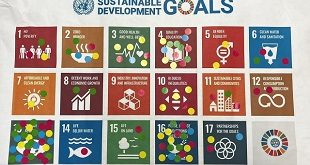
Art market maintains surge amidst Covid-19 pandemic Storm
Kampala, Uganda | DOMINIC MUWANGUZI | Well, the Covid- 19 pandemic will not affect the booming art market for contemporary art from Africa. This to many may come as a big surprise compared to how the pandemic has severed several businesses across the globe. Now over a period of one year since the coronavirus virus broke out and several countries have had to devise radical measures inform of total or partial lockdowns to slow down its spread, many business people have been locked out of work. This has subsequently caused many to close shop indefinitely or prioritize key expenditures. Business personalities are known to form the bulk of the art clientele across the world, and ordinarily them being out of work, would imply a lockdown in revenue for an industry that is worth billions of dollars internationally. For example, both the 1-54 and Sotheby Art sales which specialize in the sale of modern and contemporary art from Africa have since their inception registered record sales of over billions of dollars at each event. At the Sotheby art auction in 2020 the art sale saw a surprising performance of $ 2.9 million worth of art sold. This was just a few weeks into the lockdown in the U.K.
This seemingly means it is business as usual in a market some critics describe as small but has an international presence. This is quite odd since other businesses in other sectors are tightly fasten their belts to weather the fierce storm of the pandemic. In Kampala, Afriart gallery the premier art space that showcases contemporary art from the region and continent, is holding a virtual solo showcase of Sungi Mlengeya recent body of work titled Just Disruptions. This comes on the heels of a total lockdown which was imposed on the country to curtail the spread of the virus. A virtual show is a convenient way to reaching out to the gallery’s growing international clientele in circumstances where movement is restricted. Though it may be too early to ascertain the success of the show, Daudi Karungi, the gallery director reveals they have maintained their clientele as a gallery in these unlucky economic times. “ Not much has changed for us during the pandemic. We have maintained our sales though art collectors cannot have physical interaction with the art”. The gallery is making use of its social platforms like Instagram to sell the work in the exhibition. Incidentally, Sungi is one of the most coveted artists for the gallery and selling her work online may not afterall be a hustle.
Karungi’s observation points to the art of artists who are already famed internationally like is the case with Sungi. These are not affected by the absence of physical interaction with artworks which happens at art auctions. At auctions collectors get to engage with new artists and their work but also importantly access the quality of the artwork on sale. Art collectors do not want to pay money for substandard art. This will affect the price in the secondary market which is not a good gesture in art business. As such physical interaction remains critical for new artists to get the required confidence of the collectors. Within the context of the prevailing situation, burgeoning or new artists are definitely locked out in sales. They need the physical presence of buyers to engage with the unknown like Karungi puts it.
But where does this leave the young artists who perennially struggle to get material to produce art? In the situation of the established and emerging artists they can either personally afford material to work during the pandemic or easily get the supply from the gallery which represents them. They need to keep on working- even during the lockdown- to produce art for an existing demand which can’t be slowed down even by the pandemic. According to Karungi, Afriart gallery made plans early to provide space and material to artists to work without interruptions. The same strategy is put forward by Valerie Kabov director of First Floor Gallery, Harare and co- founder of Emerging African Art Galleries Association (EAAGA). Kabov says as an association they have done a lot “swapping ideas, sharing advice and helping one another with logistics in the face of the lockdown across the continent”. Afriart gallery is a member of the continental association. A constant supply of art material and no interruption in working during the lockdown, is a typical luxury for the average Ugandan artist who has no international reputation or is not represented by a gallery like Afriart.. As such the pandemic and lockdown are an inconvenience to their practice because their random customers, mostly tourists and a handful of Uganda business personality, are wrecked by the economic uncertainty.
The fragile economy within which some of these artists work has not deterred their economic fortunes. This thanks to the surge in the market for contemporary art from Africa. A purchase of an artwork or several of them now means a wise investment by a collector who can fetch four times the price of the same at an auction house either in London, Newyork and Paris. There is certainly more urgent need to improve the art infrastructures in some of the countries like Senegal, Congo, Uganda and Tanzania where now some of the established artists in the contemporary art world originate.
****
Images courtesy of Matt Kayem
 The Independent Uganda: You get the Truth we Pay the Price
The Independent Uganda: You get the Truth we Pay the Price



